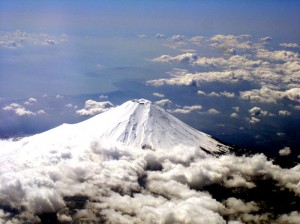
Back in March 2006, I visited Japan together with my friend Simone, who had been staying there for a language course, in order to discover a very strange -for me at first- country. Her vast experience and knowledge of land and culture naturally helped tremendously to discover and understand its very unique features and specialties.
In the first of the two weeks we stayed in Tokyo, where I spent my day strolling through the streets by meself, accompanied only by my Lonely Planet. In the second week we visited her former host family in Matsue (located in Shimane province in the Northwest of the main island) and went on from there to Kyoto and Nara and back to Tokyo again.
In this post, I don’t intend to provide an accurate description of the route, but rather introduce a few impressions and observations regarding country and people (culture, food, religion).
The food:
The common „Westerner“ of course links Japan to Sushi. This method of preparation of raw fish might require some getting-used-to, but certainly is incredibly tasty. The classic Japanese cuisine is actually fairly simple in principle meaning not over-seasoned. The intrinsic flavor of the ingredients is brought to the taste buds, a concept which is closely linked to culture and ideology. This is also reflected in the often beautifully arranged dishes. However, beyond the more traditional dishes, there are also many other specialties that pleasure the spice loving palate. I like to mention in this respect the most delicious soups (eg ramen) and pasta (eg udon, soba). Also quite tasty pork and beef dishes can be found everywhere (eg sukiyaki).
The Japanese cuisine distinguishes itself further by the fact that (already) in the past the people had taken up new and initially unfamiliar dishes from other cultures and developed them further to their perfection, just like for example the noodles, which originate from China.
Here are some impressions from some culinary discoveries.
The first picture was taken in a ryokan, a traditional hotel where you can experience Japanese hosting in a most authentic way. Sitting on tatami mats on the floor and in a traditional Japanese environment you the meals get served together with a rich array of classical Japanese snacks:
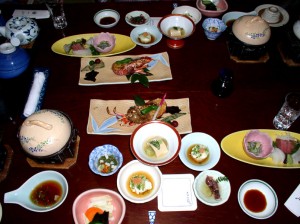
On another occasion we were in a small but nice sushi restaurant. One could choose there from the still complete animal the parts to be served soon after as sashimi (raw fish without rice or other side dishes):
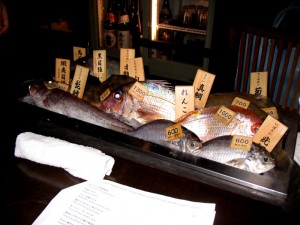
The result might look as follows:
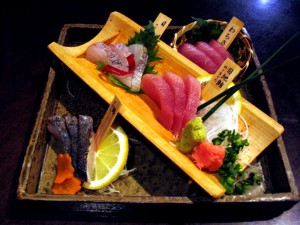
Another peculiarity is the typical Japanese display of the more or less complete menu in the window, by means of highly detailed plastic replicas of the respective dishes. In this photo, even though demonstrated here for a rather atypical Italian Restaurant:
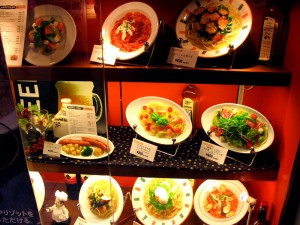
Land and People – Tokyo:
The Capital of Japan sets a lot of superlatives. In metropolitan Tokyo approximately 30 million people live together in a rather small space. Despite these masses of people, somehow living together works out surprisingly well (set aside the same chaotic traffic you find everywhere throughout the world in highly populated areas). This is certainly due in large to the stoic discipline of the Japanese. Only in this way it can be explained that during peak times traffic in streets and subway does not collapse entirely.
Below you will find some impressions of this.
Cross street in Shibuya:
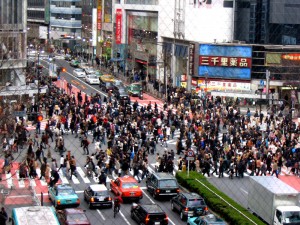
Tokyo @ night. I highly recommend a visit to the Sky Bar at the Park Hyatt hotel (see „Lost in Translation“):
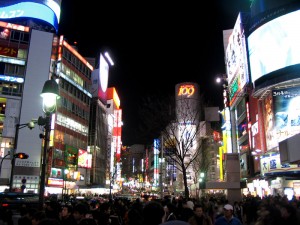
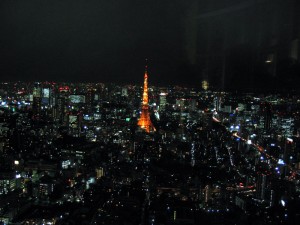
Toilet habits generally say very much about a culture. Japanese toilets are a perfect example: pure high-tech. Letting aside heated seats, built-in butt flushing (coming with conveniently adjustable spray angles various flow rates), automatic seat cleaning and disinfection, some of those „electric“ chairs even offer a „camouflage“ background noise (eg a quite fitting sound of flowing water):
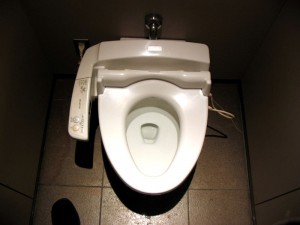
The next shot depicts a typical scene in a subway: one guy asleep (no wonder with those labor and travel times) and two women playing with their cell phones:
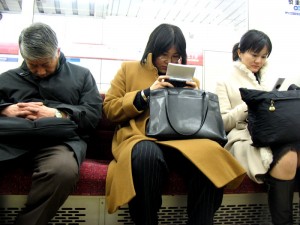
Architecturally, Tokyo has of course also many things to offer. The following two photos were taken in Roppongi Hills Tower, where you can enjoy a great view over the city:
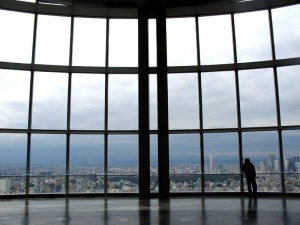
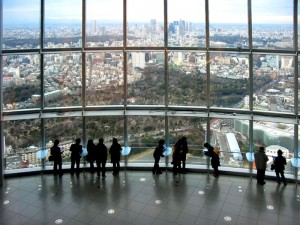
The next two photos were taken in Shinjuku, a district where among many shopping opportunities a number of major commercial and administrative buildings enthrone.
Inner courtyard of the NS building:
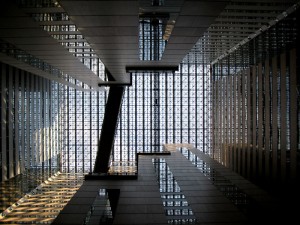
Inner courtyard of the Sumitomo Building:
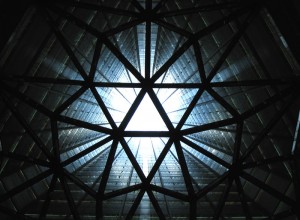
As Tokyo tourist one definitely should not miss a visit to the largest fish market in the world (ie, Tsukiji, pronounced „Zkidschi“). Every morning at 6.00 clock the landed fish will be auctioned off and immediately processed by the merchants in the neighboring halls:
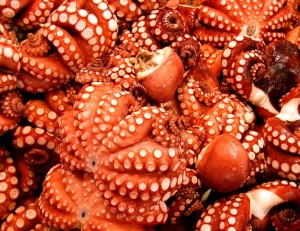
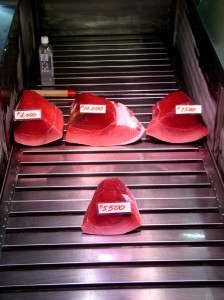

Religion:
The Japanese have an intimate but rather undogmatic attitude to religion. The country is dominated by two religions: Buddhism and Shintoism (a kind of nature religion and the traditional religion of the imperial family). Often the Japanese move back and forth between these two and some even chose to get married in Western style in a chapel for a change.
You will encounter ancient temples in many places, sometimes even in the middle of the city, hidden between some high-rises. Naturally, we have visited some of them: In Tokyo, for example, one should pay a visit to the Meiji Shrine, a major installment in the middle of the sea of houses. Furthermore, the Asakusa Temple is worth checking out.
According to the rites you have to clean yourself before entering a shrine. Hence, there is usually a well or fountain present in front, as shown in the following picture:
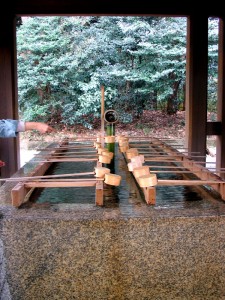
Within the temple area, you will find many time a kind of wish collection point, where you can deposit your wishes written on small wooden panels. It is hoped that the God or Spirit indwelling the shrine fulfills these desires:
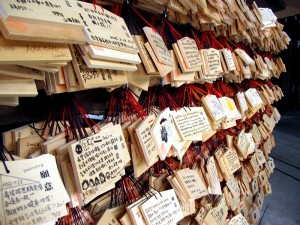
As mentioned above, our trip also brought us to Kyoto. The old imperial city offers many attractions, especially large and very beautiful temples, as shown in the following pictures.
Kinkakuji, the Golden Pavilion:
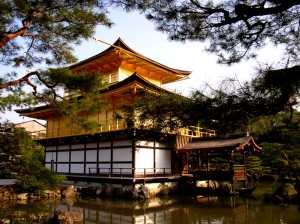
Ginkakuji, the silver pavilion:
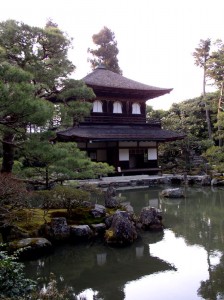
Kiyomizu-dera, a Buddhist temple:
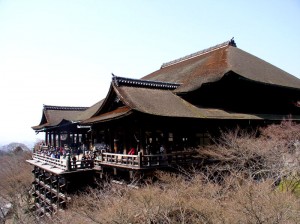
Fushimi-Inari Shrine:
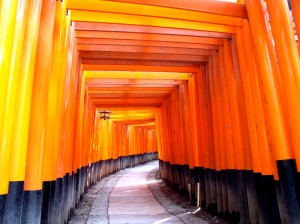
On our journey back to Tokyo with a Shinkansen bullet train we had the opportunity to stop-by in Nara, in order to visit the Todaiji temple, where you can marvel the world’s largest bronze Buddha statue, at 16.2 m of height and 452 tons in weight:
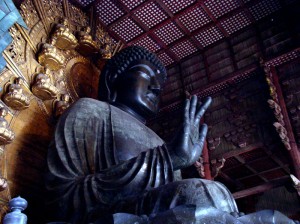
Another attraction there is the Kasuga Shrine, which is „equipped“ with more than thousand lanterns made of bronze and stone:
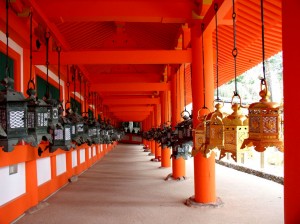
Another very interesting encounter we had at Izumo Taischa, one of the largest and most famous Shinto shrines in Japan, located in Shimane Prefecture (near Matsue). There we had the chance to observe a traditional wedding ceremony:
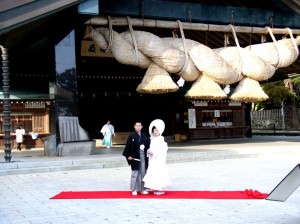
Japan is definitely worth a trip, but it is admittedly so much more rewarding when you have a knowing and understanding guide with you capable of reading and speaking Japanese.



